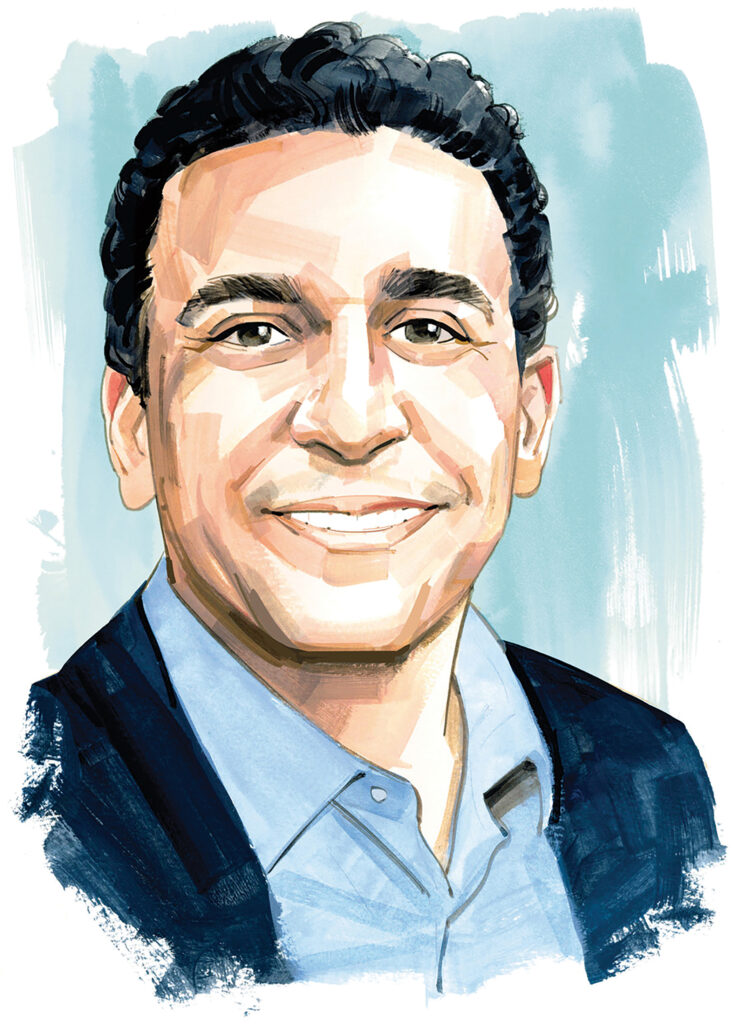Pocket Résumé
AZIZ RANA
Degrees: BA summa cum laude and PhD, Harvard; JD, Yale. Law professor, Cornell, 2010-2023. J. Donald Monan, SJ, University Professor of Law and Government, and Provost’s Distinguished Fellow, Boston College. Author: Two books, articles in the Guardian, Dissent, New Republic, Washington Post, New York Times, and numerous distinguished law reviews.
Idea: The Constitution has recently lost its quasi-mythical status in American political culture. Such reverence, a distinctively 20th century phenomenon, had far-reaching consequences domestically and abroad. It also obscured voices of opposition, voices that today offer essential insights.
The Impact: As part of the rollout for his new book, The Constitutional Bind (University of Chicago Press), Professor Aziz Rana penned a New York Times op-ed calling for significant changes to our system of government. A few days later, the Times ran a letter from Nancy Pelosi, the former House speaker, in which she calls Rana’s article “a strong case for legislative solutions that will reinforce American democracy.” The book itself, published on April 16, has already drawn raves. David Pozen of Columbia Law School calls it “dazzling in its intellectual acuity,” while the big-name historians Samuel Moyn, of Yale, and Robin D. G. Kelley, of UCLA, have both called it a “masterpiece.”
The book identifies and explains an almost worshipful story of the Constitution—Rana calls it “creedal constitutionalism”—that peaked in the decades after WWII. The Constitution became central to the narrative Americans told about themselves. It aided reform projects at home and served as ammunition in the Cold War battle for Third World hearts as the country took its place as a global hegemon. Yet ignored by the creedal constitutionalists, including many liberals, were the overlapping “pathologies”—Rana’s word—of our governing arrangements.
A deeply reverential view of the Constitution, which emerged alongside 20th century US global dominance, has begun to lose its hold on the American imagination in recent years. This has made space to reconsider the lessons offered by past voices of opposition and reform that have long been covered over.
First, he writes, “the existing order makes it especially difficult for today’s multiracial and largely urban majority coalition to implement widely backed policies in response to significant social problems.” Secondly, the Constitution magnifies the power of certain geographic regions far beyond what their numbers justify, resulting, Rana argues, in “persistent cycles of crisis and popular disaffection. Majorities hold out hope that the political class can resolve key concerns, only to be disappointed, time and again, by gridlock and institutional paralysis.” Finally, this predicament has been fertile ground for the growth of the modern presidency, with its tendency to rule by fiat to compensate for paralysis in the legislative branch.
Since the turn of the millennium, Rana says, creedal constitutionalism has begun to lose its hold on the American imagination, the result of two presidential elections in less than twenty years that were won by a candidate who lost the popular vote, a Supreme Court that produces opinions running counter to the views of large majorities of Americans and throws up its hands when confronted with extreme gerrymandering, and a Senate so beholden to the views of small-state voters that it struggles to solve problems.
Rana’s book focuses on how these problems were obscured by our reverential constitutional culture, exploring how that culture emerged alongside 20th century US global dominance. Still, opposition movements and actors attempted to amend the text and, in some notable cases, succeeded. Early 20th century movements secured amendments granting women the right to vote, allowing a federal income tax, and requiring the direct election of senators. Chapters also touch on the court-packing scheme that Franklin Roosevelt’s administration pursued when faced with a rigidly anti-New Deal Supreme Court, the civil rights movement of the 1960s, and even a little-remembered convention sponsored by the radical Black Panther movement and attended by a broad swath of the activist left, with the goal of replacing the Constitution with a more democratic document. Names that come up in these chapters range from celebrated figures like Emma Goldman, Norman Thomas, W. E. B. Du Bois, and Martin Luther King Jr. to less familiar ones such as Hubert Harrison, Crystal Eastman, and Afeni Shakur, the last of whom is known now less for her activism than as the mother of Tupac Shakur, the late rapper.
A final chapter of the book argues that implementing changes to the Constitution will take a new mass movement—and maps out the bumpy road the movement would likely have to travel. “We are still some ways away from such a movement,” Rana says, “but the vibrancy of political organizing in the last decade, especially around labor and the movement for Black lives, speaks to the emergence of new coalitions committed to a more democratic politics. The question is how to expand these constituencies into a majority coalition on behalf of comprehensive constitutional reform.”
In addressing the perceived flaws of the Constitution, The Constitutional Bind at times uses stark language—for instance, considering whether the US has ever “been a genuine democracy.” As awareness of the book grows, does Rana expect to hear from people who disagree with his explanation of American constitutional culture?
“It’s likely,” Rana says, “but that would be a sign of the project’s success.”


